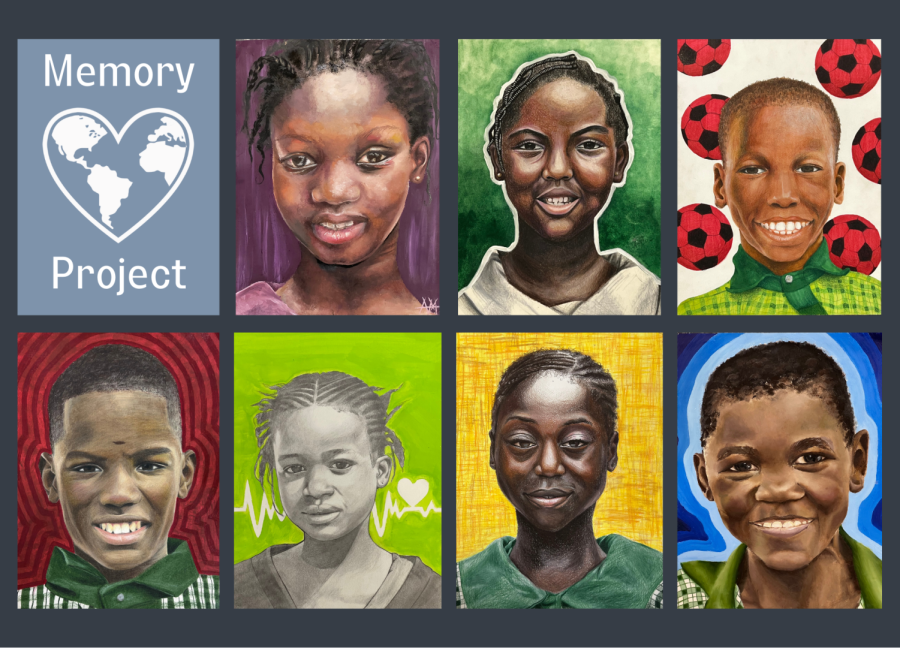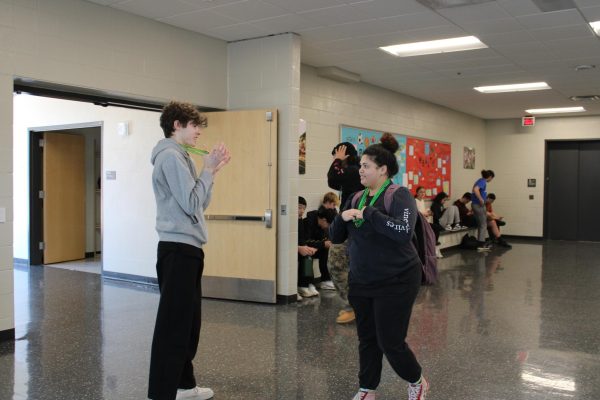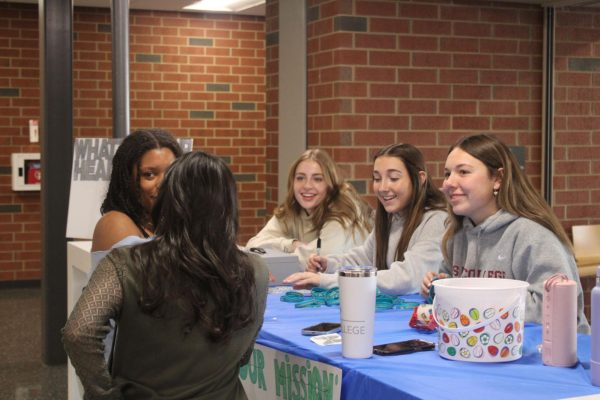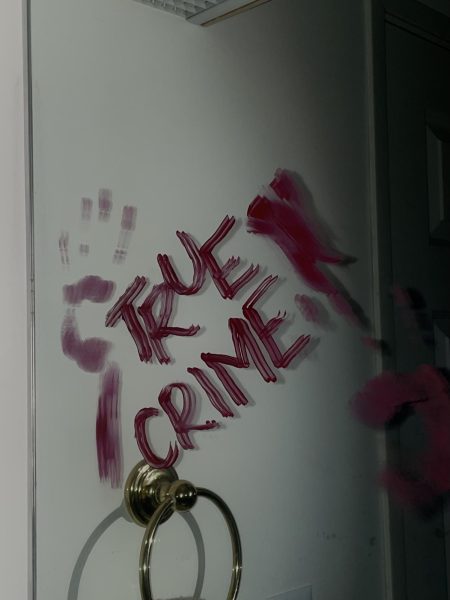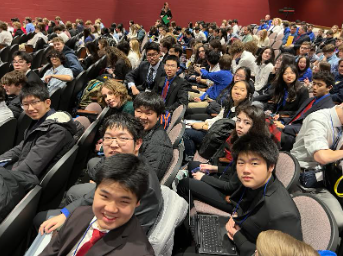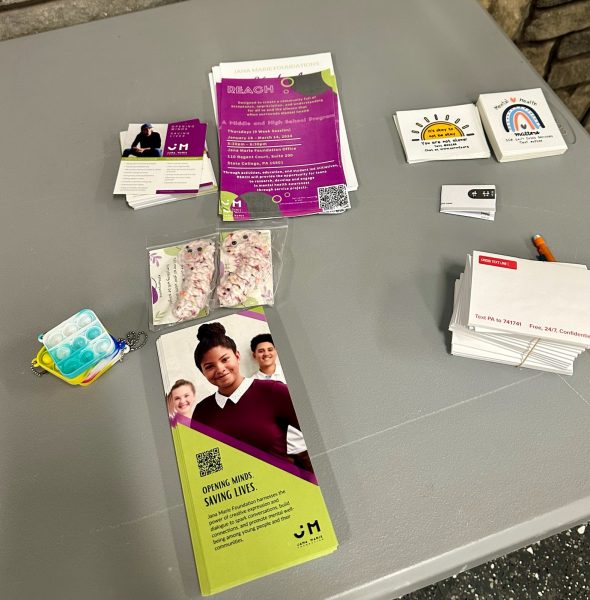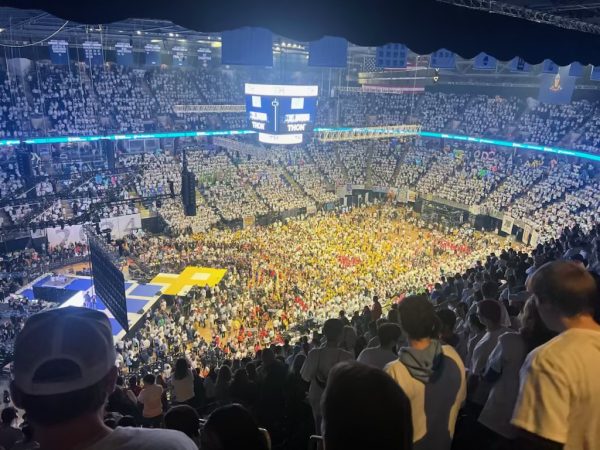Memory Project Brightens Lives and the Halls of State High
Photos courtesy of Maure Irwin-Furmanek
Examples of Memory Project portraits made by Art Club students Annalise McMahon, Lily Umbel, Brynn Bortree, Winter Martin, Lorenzo Frepoli, Alex Antoniono, and Catherine Frank. Students chose a variety of mediums, including colored pencil, gouache, graphite, and more.
April 26, 2022
Art Club is spreading the universal language of art around the globe and the halls of State High with its annual involvement in the Memory Project. For the past few months, Art Club members studied, sketched, drew, painted, and created portraits based on photos of refugee children in Nigeria that they received from the Memory Project, a nonprofit organization. The finished portraits are now on their way into the hands of the children whom they feature. Prints of the artwork are also on display in State High’s halls and stairwells.
The Memory Project, whose slogan is “Creating a kinder world through art,” began in 2004 as the brainchild of Ben Schumaker. Its mission is “to provide handmade, heartfelt portraits as special memories to […] youth around the world facing many types of challenges.” Around five or six years ago, Schumaker reached out to State High art teacher and Art Club advisor Maure Irwin-Furmanek about the club getting involved in the project, and ever since, the Memory Project has been a staple of Art Club’s yearly activities.
“It’s almost like a pen pal, but we’re working with art instead, and the children are really excited when they get [their portraits]—they’re ecstatic,” Irwin-Furmanek said.
Each fall, the Memory Project sends Art Club a batch of children’s photos and each child’s name, age, favorite color, interests, and potential career path. The artists use the child’s likeness as a reference when creating their works and use the information as inspiration for a fun background. On the back of each piece, students trace their hand, write a note to the recipient inside of the outline, and include a photo of themselves as well as their name and age. This year, in early March, Irwin-Furmanek collected the artwork—a total of 35 pieces—and sent it off to the Memory Project. Members of the organization will fly to Nigeria to distribute the art to the children while taking video footage of the kids’ reactions that will be shared with Art Club.
“The videos show that they’re just so excited to get it and cherish it because they don’t really have a lot of photographs of themselves because they’re refugee children, so that means a lot to them,” Irwin-Furmanek said.
Senior and Art Club co-vice president Lorenzo Frepoli added on, describing how rewarding it is to view this footage.
“It’s just really heartwarming to see how happy [the art] makes them,” Frepoli said.
This is Frepoli’s second year creating a Memory Project portrait. He chose to work with graphite and gouache.
Senior and Art Club president Lily Umbel participated in the project for the third time this year, opting to create her portrait with colored pencils.
“It’s a really gratifying experience because a lot of the kids that we do portraits for—they don’t have a lot, so it’s really nice to be able to make them something that’s really high-quality and a picture of themselves,” Umbel said.
Art Club students who choose to get involved with the project take their work seriously, especially because they know how meaningful the portraits they create are to their recipients.
“[My favorite thing about the project is] just how excited my students get to give [the portraits] to other children who will really appreciate it. A lot of my students have said, ‘I wanna do the best I’ve ever done on a piece with this one because I know it’s going to someone,’ so they get really excited, and it gives them a lot of meaning,” Irwin-Furmanek commented.
Umbel reflected on how much she enjoys not only the process of making the portrait but also holding her final piece and the photo that inspired it side by side.
“It’s really fun, when you finish the portrait, to be able to look at the portrait and the picture of the kid you [got] because it’s so cool to see the end result, and I just really enjoy that part,” Umbel said.
Frepoli also enjoys the time spent making the portraits alongside his Art Club peers. Students work on their pieces during Art Club meetings, art classes, or at home.
“My favorite thing is, I think, the process—the period where all these students from the different art classes work together and they each have their own kid that they’re working on,” Frepoli said. “You spend two to three months studying the face and creating this piece, and I think that sense of community is really my favorite part.”
Irwin-Furmanek, Frepoli, and Umbel all agreed that the Memory Project is a meaningful way to put artistic skills to use.
“You know that the art you’re making is going to make someone happy, and there’s something really rewarding about knowing that the physical piece of art you’re making is going to be in the hands of a kid, and you know they’re going to love it,” Umbel said.
Frepoli offered a similar sentiment, expressing appreciation for the Memory Project’s core mission: unity through art.
“What I love about the project most is the message of bringing people together,” Frepoli said. “It’s really nice to receive the photos of these kids and provide them with this memory kind of feeling. They might be facing challenges, like war, poverty, or little access to education. Although it’s a small action, getting these portraits tells the children that they’re valued and that there are people from across the world who are thinking and caring about them.”

